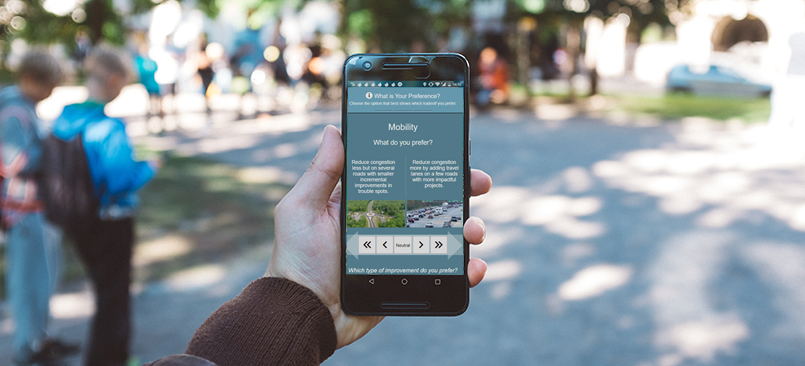Three Big Steps Towards Equity in Virtual Public Engagement for Transportation Planning

The dramatic shift to virtual public engagement driven by the pandemic is causing many planners and public engagement professionals to seek out innovative ways to connect with difficult-to-reach and traditionally underrepresented audiences without face-to-ace events. Diversity, Equity and Inclusion (DEI) are in the spotlight and public engagement efforts to support planning projects are under increasing scrutiny to ensure that broad representation is achieved.
In order to assist the planning and engagement communities with these challenges, we have conducted three major initiatives:
- First, early in 2021, we carefully combed through hundreds of public engagement case studies looking for patterns and best practices among the best performing projects.
- Second, in April 2021, we facilitated the Forum on Equity and Public Engagement for Transportation Planning including a panel of engagement and equity experts and online discussions with over 1400 participants representing agencies and consulting teams from across the country.
- And finally, in September 2021 we hosted the first annual conference on Virtual Public Engagement for Transportation Planning, featuring peer to peer presentations with speakers from agencies and firms across the nation and discussions of the most compelling case studies we found in our research.
Several important insights are coming from this focus on DEI in online engagement and we will be preparing a detailed guidebook documenting these insights later this fall. To whet your appetite for that guide, here are three things that each of the best performing case studies have done to ensure that their plans serve the most pressing needs of their community in all its diversity.
- Compelling virtual experience
Each of the most exceptional case studies we reviewed used a carefully planned online engagement experience that was easy to understand, fast to complete, used more visuals than text, offered in multiple languages, included educational components for complex choices and trade-offs, and was mobile-friendly. These factors combine to dramatically lower many key barriers to participation and create a truly engaging experience that people are happy to share with others. - Targeted promotions
The practice of monitoring engagement demographics—particularly demographic ‘gaps’ of people who are not engaging— early on in the engagement process turns out to be critical to success. By carefully tracking the demographics of participants and comparing them to the statistics in the study area, teams can evaluate underrepresented groups and use targeting strategies like social media ads and partnerships with community groups to encourage a more balanced representation of the community. - Equity-focused follow through
Steps one and two are about diversity and inclusion. Step three is about equity. Once high-quality public input has been collected, it’s critical to ensure that the input from a diverse cross-section of the community is used to inform planning decisions and, eventually, project implementation. Effective teams carefully calibrate and analyze input from each demographic group to determine key transportation needs, priorities and gaps. These needs are then incorporated into plan recommendations and, to the extent possible, used to inform the allocation of resources and prioritization of projects.
The upcoming guidebook on DEI best practices for online community engagement will expand on these strategies and cover many new techniques to help planning and engagement teams achieve consistently exceptional results when using online engagement tools and push towards more equity in virtual public engagement.
The guide will also spotlight case studies including this project conducted by LA Metro and Arellano Associates. When renewing their bus network plan in Los Angeles the team used online tools to engage a diverse cross-section of the region, in nearly a perfect match to the diverse demographics of the local community across income levels, ethnicity, gender, zip codes and other categories. The needs identified by the community were then faithfully incorporated into the new proposed network plan and, in many cases, actual public comments accompanied recommendations to allow decision makers the benefit of community input verbatim.
We hope you find these resources useful. Keep an eye out for the guidebook coming soon!
Want a head start on equity for virtual public engagement? Watch our recent on-demand webinar:
Forum on Equity and Public Engagement for Transportation Planning
In this webinar, public engagement and equity experts join forces to highlight the most effective approaches for meaningful and diverse engagement for transportation planning that lead to actionable plans and more equitable communities.
